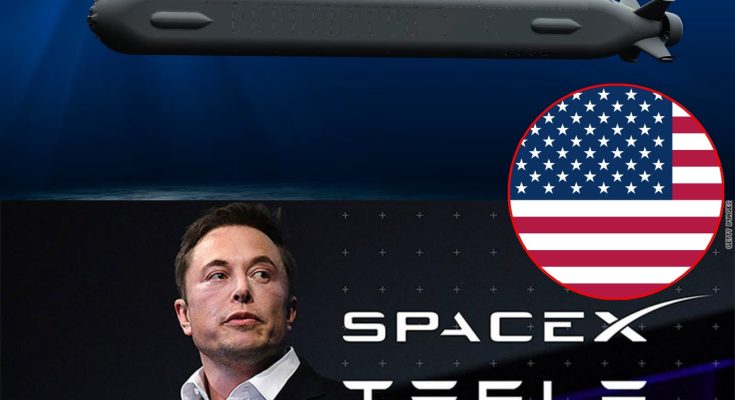In a move that signals a significant cultural and technological shift in the U.S. military’s approach to innovation, the U.S. Navy has announced it is applying what it calls the “SpaceX method” to accelerate the development of unmanned underwater vehicles (UUVs).This approach, borrowed from Elon Musk’s pioneering aerospace company, emphasizes rapid prototyping, iterative design, and learning by doing—eschewing traditional bureaucratic cycles of extensive planning and delayed testing.The revelation came during a defense innovation symposium in Washington, D.C., where Vice Admiral Robert Gaucher, commander of U.S.Submarine Forces, explained how the Navy’s current approach to UUV development has been directly influenced by the practices that have made SpaceX a leader in the commercial space race.“We are adopting the SpaceX approach, which is essentially ‘just get it out there and test it,’ because we’ve realized that developers learn far more when the operators are actually using the prototypes,” said Vice Admiral Gaucher.His comments provide rare insight into how military organizations are beginning to pivot toward more agile, tech-forward strategies that value speed and real-world feedback over the illusion of perfection.Traditionally, military acquisition and development programs have followed a highly structured, linear process that places great emphasis on initial design, detailed documentation, and long-term planning.These programs often take years or even decades to bring a fully realized system to operational readiness, during which time the underlying technology can become outdated or eclipsed by private-sector advances.The Navy’s new approach signals a major departure from this model. By leveraging the “fail fast, learn faster” methodology often associated with startups and Silicon Valley disruptors, the U.S. Navy hopes to close the widening gap between commercial innovation and military adaptation.At the heart of this change is the UUV—an unmanned, underwater vehicle that could play a pivotal role in future maritime warfare, intelligence gathering, and deep-sea exploration.The strategic importance of unmanned underwater systems is growing rapidly. In an era where geopolitical tensions are shifting to new domains—including cyber, space, and the deep sea—having an autonomous, stealthy underwater presence offers unique operational advantages.UUVs can perform a wide range of missions, including mine detection and clearance, submarine tracking, underwater mapping, payload delivery, and intelligence surveillance and reconnaissance (ISR).Unlike manned submarines, they carry no risk to human life and can be deployed in hazardous or denied areas with minimal logistical support.Moreover, UUVs can extend the Navy’s reach into areas that are otherwise difficult to access or defend. As adversarial powers like China and Russia continue to invest heavily in undersea warfare capabilities, the ability to maintain undersea superiority is emerging as a strategic imperative for the U.S. Navy.SpaceX is widely known not just for its engineering marvels, but for its willingness to embrace failure as an essential component of innovation. Its early rocket launches were plagued by explosions and setbacks, many of them publicly broadcast.However, each failure provided critical data that led to rapid improvements. This mindset contrasts sharply with the risk-averse culture that has traditionally characterized military procurement.By applying this model, the Navy aims to test early-stage prototypes of UUVs in real-world conditions rather than wait for perfected models that may never reach deployment.The logic is clear: it is better to learn through active use and continuous iteration than to delay implementation in pursuit of theoretical optimization.Vice Admiral Gaucher emphasized that this approach is already yielding valuable insights. “The fleet is telling us things we would have never learned in the lab or on paper,” he noted.“They’re breaking the prototypes, yes, but they’re also showing us what really works—and what doesn’t—under operational stress.”There are several compelling reasons why the Navy’s shift to the SpaceX-inspired model is not only logical but necessary.First, it accelerates the innovation cycle. Instead of taking five to ten years to deploy a system, the Navy can deploy, test, and refine UUVs within months. This ensures that the technology remains relevant and can evolve alongside emerging threats.Second, it reduces long-term costs. While the upfront failure rate may be higher, identifying and fixing design flaws early prevents expensive retrofits or program cancellations later.Third, it empowers end-users—the sailors and submarine crews who will ultimately deploy and interact with these systems. By involving operators early in the development cycle, the Navy ensures that the final product reflects real-world needs, not theoretical assumptions.Finally, it fosters a culture of innovation and adaptability within the armed forces. Encouraging risk-taking, experimentation, and cross-disciplinary collaboration signals to younger engineers and officers that the Navy is open to new ideas and ready to evolve.Despite the clear advantages, implementing this new approach is not without challenges. Institutional inertia, risk aversion, and regulatory hurdles still pose significant obstacles to widespread adoption.In the military, failure is often stigmatized. Procurement officers and program managers are evaluated based on stability, predictability, and accountability—metrics that don’t align neatly with rapid prototyping and experimental design.Transitioning to a culture that accepts and even embraces failure will require a fundamental shift in mindset at multiple levels of leadership.There are also technical challenges. Operating autonomous systems underwater is inherently more complex than in the air or on land.Issues related to pressure resistance, communication latency, and navigation in GPS-denied environments must be addressed through both hardware and software innovation.Security is another concern. As UUVs become more autonomous and connected, ensuring that they cannot be hacked, spoofed, or hijacked by adversaries will be critical.Applying the SpaceX model in a military context must be balanced with rigorous cybersecurity standards and mission assurance protocols.The Navy’s move could have ripple effects across the Department of Defense. Other branches of the military have also started exploring rapid prototyping, digital twins, and agile development models inspired by tech companies.The Air Force’s “Skyborg” autonomous drone project and the Army’s “Project Convergence” are two examples of this trend.What makes the Navy’s case particularly compelling is that undersea warfare has traditionally been among the most secretive and conservative domains within the defense community.That even this branch is now embracing the principles of commercial innovation is a strong indicator of how dramatically the defense ecosystem is evolving.It also sends a message to defense contractors and industry partners. The Pentagon is no longer content with slow-moving, multi-decade weapons programs. It wants speed, flexibility, and direct engagement with the operational community.Companies that can deliver functional prototypes quickly, respond to user feedback, and iterate rapidly will have a competitive edge in securing future contracts.The application of the “SpaceX method” to UUV development is more than a nod to Silicon Valley. It is a recognition that the pace of change in warfare and technology demands new approaches.The Navy is not abandoning engineering rigor or operational safety. Rather, it is shifting its focus from perfectionism to progress, from predictability to learning.As Vice Admiral Gaucher put it, “Getting these systems into sailors’ hands is how we learn faster. It’s how we get better sooner.”If successful, this approach could redefine not only how unmanned systems are developed, but also how the military integrates innovation more broadly.It could serve as a blueprint for other agencies seeking to modernize in an age where the boundaries between civilian and military technology are increasingly blurred.For now, the deep ocean—much like outer space—has become a new frontier of rapid experimentation. And just as SpaceX reshaped the skies by embracing risk and iteration, the U.S. Navy now hopes to chart a similar course beneath the waves.
LATEST NEWS: The U.S. Navy is using SpaceX’s rapid prototyping method to revolutionize underwater warfare!

Block 1


